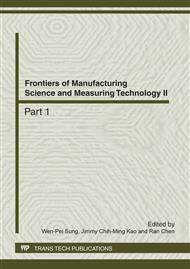[1]
Gila Benchetrit, Berathing pattern in humans: diversity and individuality, Respiration physiology. 122 (2000) 123-129.
DOI: 10.1016/s0034-5687(00)00154-7
Google Scholar
[2]
Rosemary Painter and D. J. C. Cunningham, Analyses of human respiratory flow patterns, Respiration physiology. 87 (1992) 293-307.
DOI: 10.1016/0034-5687(92)90013-m
Google Scholar
[3]
Raimo P. Hamalainen, Anu Kettunen, Stability of Fourier coefficients in relation to changes in respiratory air flow patterns, Medical engineering & physics. 22 (2000) 733-739.
DOI: 10.1016/s1350-4533(01)00007-8
Google Scholar
[4]
M. R. Miller, J. Lloyd, P. Bright, Recording flow in the first second of a maximal forced expiratory manoeuvre: influence of frequency content, European respiratory journal. 19 (2002) 530-533.
DOI: 10.1183/09031936.02.00227102
Google Scholar
[5]
M. J. Morris, R. G. Madgwick, I. Collyer, F. Denby, D. J. Lane, Analysis of expiratory tidal flow patterns as a diagnostic tool in airflow obstruction, European respiratory journal. 12 (1998) 1113-1117.
DOI: 10.1183/09031936.98.12051113
Google Scholar
[6]
He Zhonghai, Simulation study on human respiratory system based on muscle pressure driven, International conference on engineering computation. (2009) 33-35.
DOI: 10.1109/icec.2009.24
Google Scholar
[7]
Urs Frey, Bela Suki, Complexity of chronic asthma and chronic obstructive pulmonary disease: implications for risk assessment, and disease progression and control, Lancet, 372 (2008) 1088-1099.
DOI: 10.1016/s0140-6736(08)61450-6
Google Scholar
[8]
Bela Suki, Fluctuations and power laws in pulmonary physiology, American journal of respiratory critical care medicine. 166 (2002) 133-137.
DOI: 10.1164/rccm.200202-152pp
Google Scholar
[9]
Cindy Thamrin, Georgette Stern, Urs Frey, Fractals for physicians, Paediatric respiratory reviews. 11 (2010) 123-131.
DOI: 10.1016/j.prrv.2010.02.001
Google Scholar
[10]
Ary L Goldberger, Non-linear dynamics for clinicians: chaos theory, fractals, and complexity at the bedside, Lancet. 347 (1996): 1312-1314.
DOI: 10.1016/s0140-6736(96)90948-4
Google Scholar
[11]
Jose G. Venegas, Tilo Winkler, Guido Musch, Marcos F. Vidal Melo, et al, Self-organized patchiness in asthma as a preclude to catastrophic shifts, Nature, 434 (2005) 777-781.
DOI: 10.1038/nature03490
Google Scholar
[12]
Ary L. Goldberger, Complex systems, Proceedings of the American thoracic society. 3 (2006) 467-472.
Google Scholar


